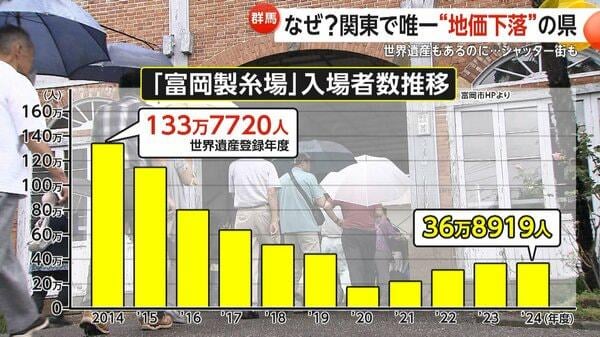
In July, Japan released new land value data. Tokyo had the biggest increase, up 8.1%, thanks to strong demand from both foreign visitors and housing needs.
But Gunma Prefecture was the only one in the Kanto region to see a drop, down 0.1%. One big reason: Tomioka City, home to the UNESCO-listed Tomioka Silk Mill, saw land values fall 2.6%, its 6th straight year of decline.
Why is Tomioka struggling?
- The Silk Mill had 1.33 million visitors in its peak year after becoming a World Heritage Site 11 years ago.
- Now, it gets only about 360,000 visitors a year—just 28% of its peak.
- Streets around the mill, once busy with tourists and shops, have now become quiet “shuttered” shopping areas with many closed businesses.
- Tourists say the area feels empty and lonely, and local taxi drivers say the lack of public transportation makes it hard for visitors to move around.
Meanwhile, Kusatsu Onsen is booming
- Also in Gunma, Kusatsu Onsen saw over 4 million tourists in 2024, a new record.
- Land values there have risen two years in a row.
- Experts say Kusatsu’s success is due to strong visual appeal—especially the “Yubatake” hot spring field’s night-time light-up, which became popular with both young people and foreign tourists.
What’s next for Tomioka?
- Foreign visitors make up just 1% of Tomioka Silk Mill’s guests.
- The city is planning multilingual social media videos to attract international tourists.
- Travel expert Kotaro Toriumi says the Silk Mill is a great attraction, but more repeat-visit strategies are needed to bring tourists back.
Bottom line: While Kusatsu thrives by appealing to tourists through visuals and atmosphere, Tomioka is struggling despite its World Heritage status. It now needs fresh ideas to bring life and visitors back to the area.
by MagazineKey4532
